A Day in the Mountains
| Travel Reports by Chashitsu | view profile of Chashitsu |
| previous post |
| next post |
| Note: The opinions and views expressed in this user report are those of the individual author and do not necessarily reflect the opinions and views of japan-guide.com. |
April 18, 2016 - A Day in the Mountains
Takao has long held a fascination and is particularly resplendent in autumn. It is a small mountain village together with Toganoo and Makinoo to the north west of Kyoto beyond Kinkaku-ji temple and accessible by bus from Kyoto station. As I was going to visit Nijo Jinya in the afternoon and had to be escorted by a translator, I engaged the services of the International Service Club and extended the brief to a morningfs visit to Takao.
There are three temples in Takao above the banks of the Kiyotaki river, which eventually feeds into the Katsura river. Being late April the main sakura was over but pockets of cherry blossom and azaleas were to be seen in the mountainside, populated by giant cedars. The principle temple is Kozan-ji founded in 774 AD, which became a casualty of the Onin wars in the 1500fs with some restoration during the Meiji period. It was designated a World Heritage site in 1994 and is an important for itfs ancient cultural treasures, in particular for itfs picture scrolls of frolicking birds and animals dating from the 12th/13th centuries. A few buildings remain including the Sekisui-in dating from the Kamakura period and the Kaisan-do hall.
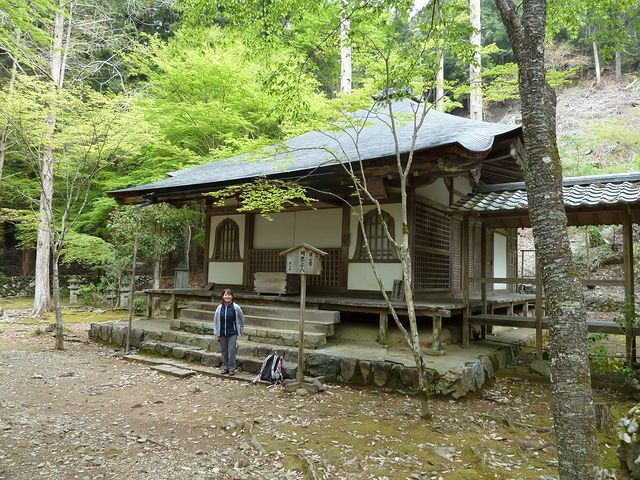
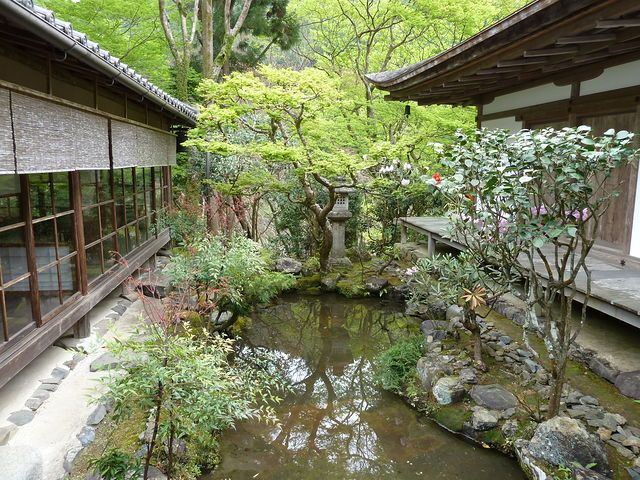
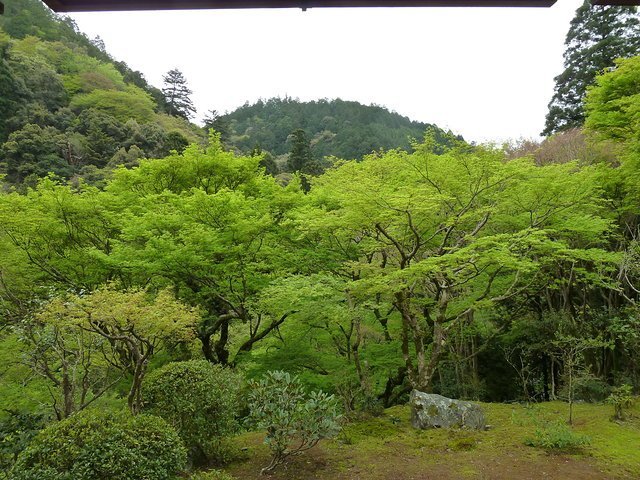

Walking further down the valley, Saimyo-ji is situated on the lower slopes of Mt. Makinoo, particularly notable for itfs autumn colour and is accessed via a traditional arched wooden Shigetsukyo bridge. It is the least outstanding of the three Takao temples.
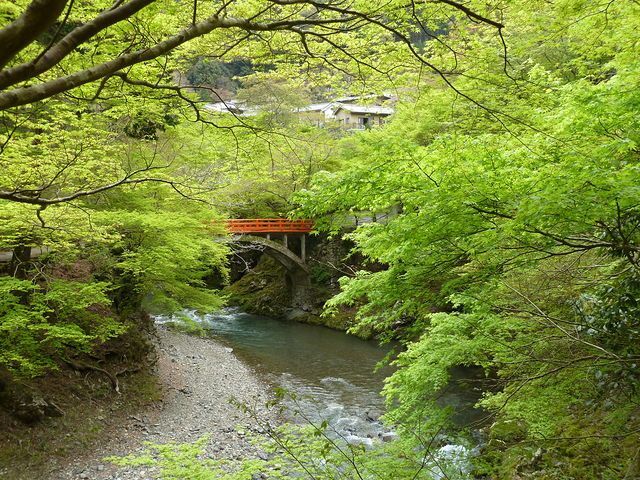
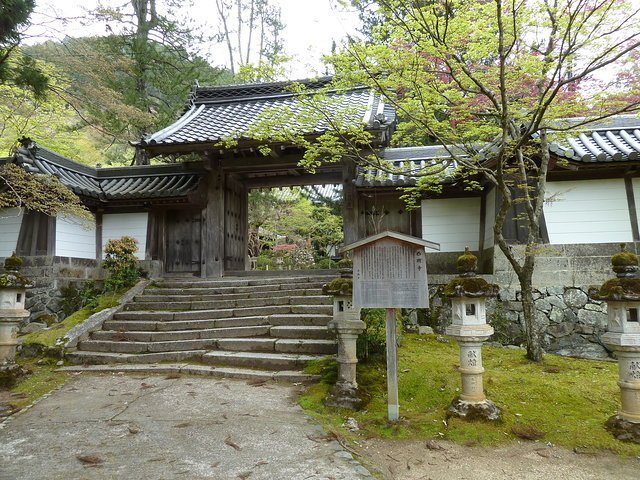
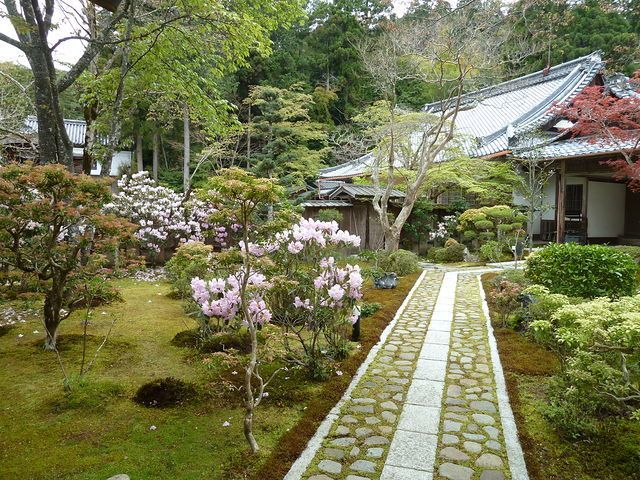
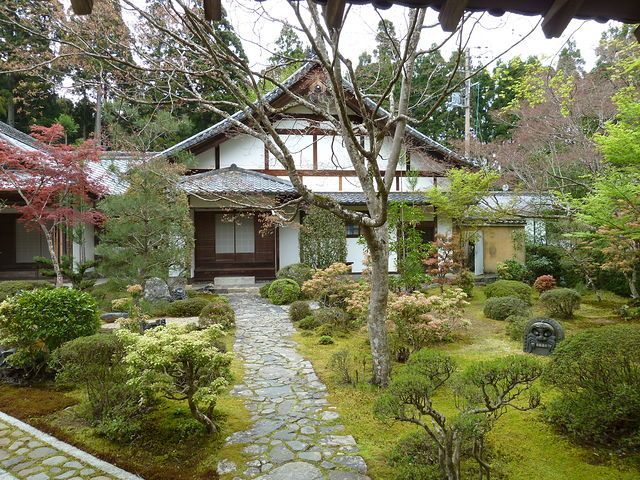
Somewhat further downstream and up many steps is Jingo-ji temple with a few more surviving buildings and modern reconstructions. It is renowned for the sport of throwing small clay discs over the river gorge and is the most attractive of the three temples. We indulged on udon noodles at the small cafe, needless to say we were about the only ones there.
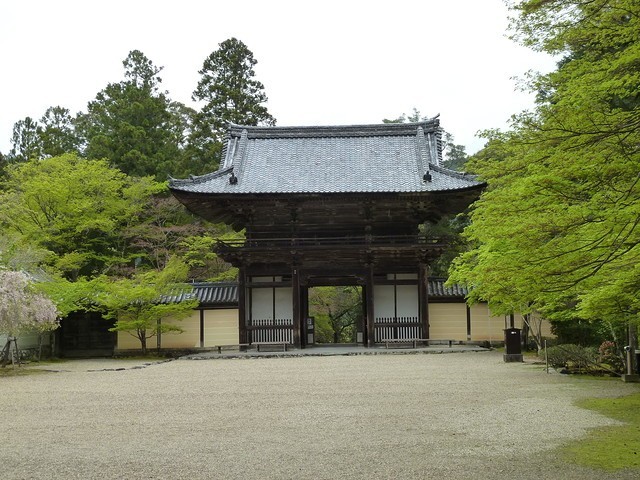
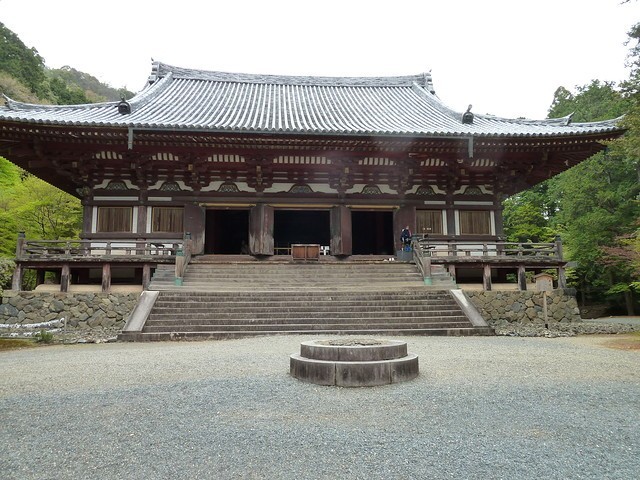
We returned to the city via bus and subway to Nijo Jinya. This is an old mansion close to Nijo castle, built by the Ogawa family during the Momoyama period as a merchants house, which was subsequently converted to an inn for visiting daimyos at the Imperial palace and Nijo castle. It has 24 rooms, many with special security features. It includes a room for staging noh plays and a couple of tea rooms. A novel feature is a suspended stair case to concealed upper stories, a soundproof hiding place over the main parlour, narrow hallways to limit sword play and removable flooring to hinder progress when under attack. Unusually its has a thatched room that resembles the interior of a boat and hangs over the side of the main building providing an emergency escape route. The security devices here reminded me of those to be found in the Ninja-dera temple in Kanazawa.
Unfortunately photography within the house is not permitted.
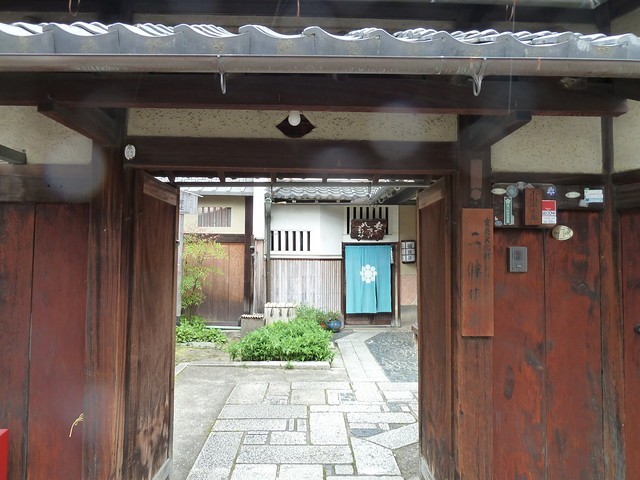
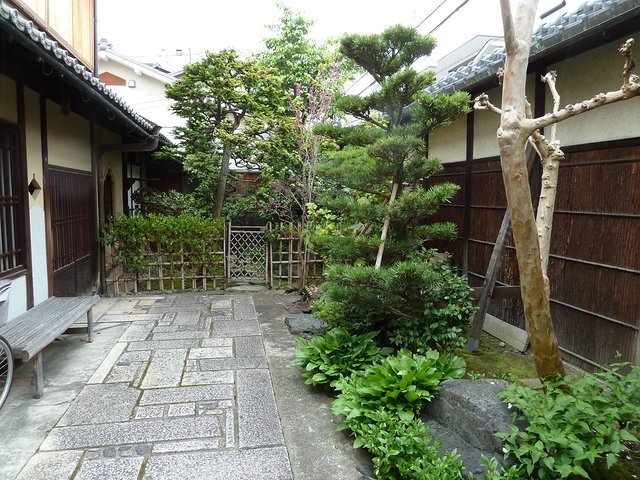

| previous post |
| next post |
|
List of Posts:
2017/07/25 - Japan's tectonic landscape reflected in the gardens 2017/07/15 - Flora of Japan 2016/04/27 - Time in Asakusa 2016/04/25 - Kakunodate 2016/04/23 - A Thousand Cranes 2016/04/22 - Castle in the Clouds 2016/04/21 - The beauty of Koraku-en 2016/04/20 - Far from the Madding Kyoto Crowds - Part 1 2016/04/20 - Far from the Madding Kyoto Crowds - Part 2 2016/04/18 - A Day in the Mountains 2016/04/17 - Delights of Hikone 2016/04/16 - Nara Revisited 2015/01/03 - Kamakura temples and gardens 2015/01/01 - Takayama Temple Trail 2014/12/29 - Kurama - Kibune hiking trail 2014/11/10 - A visit to Himeji 2014/11/05 - Shigemori Mirei - The Rebel in the Garden 2014/11/04 - Arashiyama and nearby sights 2014/11/03 - The less visited sites of Nara 2014/11/03 - The gems of Matsue 2014/10/31 - Agon-shu Monastery 2014/10/30 - In the footsteps of the Shogun 2014/10/30 - Tale of the Genji |
